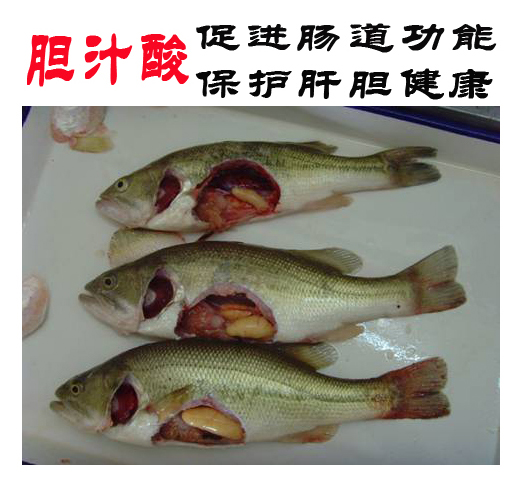Etiology of Fish and Gallbladder Syndrome

Etiology of Fish and Gallbladder Syndrome
1. The effect of liver disease on fishes
The liver is an important metabolic organ and detoxification organ of aquatic animals such as fish and shrimp, and has hematopoietic function.
Liver steatosis, the liver function disorders, affecting the absorption of nutrients, metabolism, thus affecting its growth, resulting in weakened body, disease resistance decreased susceptible to fulminant hemorrhage, rotten gills, enteritis, etc., but also reduce Fish and other aquatic animals, anti-stress ability; the fish's nutritional metabolism disorders, resulting in increased meat and meat ratio; and fish immune system disorders, resulting in decreased disease resistance of fish, more likely to burst large-scale infection Sex fish disease.
At the same time, the enzyme for digestion is produced by the liver and the output of the liver, fibrinogen and prothrombin and other substances constitute the liver, fish once the formation of liver disease, will cause its blood vessels easily rupture, the blood is difficult to solidify, Irritation (such as pull the net, transport, water temperature mutation, poor water quality) will occur stress bleeding syndrome, or even a large number of deaths.
2. Etiology analysis
Feed nutrient level is too high, the pathogenic microbial invasion, breeding density is too large, the water environment deterioration, drug abuse, vitamin deficiency, feed rancidity deterioration and nutrient imbalance and feed containing toxic substances, are likely to cause liver Damage, the emergence of liver and gallbladder disease as the main characteristics of fish diseases, leading to the current breeding of fish and other aquatic animal liver disease is extremely common.
1) Nutritional factors
Feeding nutrient levels are too high to cause fish liver disease. High protein feed easily induced liver fat accumulation, destruction of liver function, interference fish normal physiological and biochemical metabolism. Carbohydrate content is too high, will cause fish sugar metabolism disorders, resulting in visceral fat accumulation, hinder the normal function, triggering fatty liver. Feeding fat-containing feed can cause liver disease directly.
In addition, the nutritional indicators of feed and breeding objects inappropriate, such as feeding carp fed with bream or grass carp, with fry, seed feed feed fish, etc. will cause liver disease. Feeding too much feed every day many times to strengthen the feeding, causing the fish to grow too fast, fat and fatty liver. Fish feed contains toxic and harmful substances, such as gossypol in cottonseed meal, sulfur glucoside in rapeseed meal, nitrite in inferior fish meal and other toxic and harmful substances can cause fish liver and gallbladder diseases.
Fish feed Oxidized rancidity of fat produced by the aldehyde substances are very toxic, great damage to the liver of the fish, affecting the normal function of the liver. Grass carp fed with oxidized rancid fat after the liver, gallbladder enlargement, increased fish mortality. Moldy, damp feed will produce aflatoxin and nitric acid compounds caused by liver disease. Test results show that feeding with aflatoxin 0.008-0.012mg / kg of feed, the 8 - 12 days, the incidence of fish liver up to 80% -100%.
2) pathogen infection
Most of the fish for some reason after the infection of the disease after infection with the liver or affect the normal liver function caused by liver disease. Such as the general by Aeromonas hydrophila, Edwardsiella and rhabdovirus, reovirus and other pathogenic microbial infection, will be directly or indirectly complicated by hepatitis.
Liver is a pathogen easily attack the target organ, viruses, protozoa and other parasites in the cell, and in which replication and reproduction, leading to liver cell metabolism disorders, causing liver cell degeneration and necrosis. Extracellular parasites in the liver extracellular proliferation, resulting in toxins, causing liver cell metabolism, leading to liver cell degeneration, necrosis.
3) Drugs
Caused by a variety of external pollutants or internal toxic substances, such as heavy metal poisoning, pesticides, ammonia, nitrite, hydrogen sulfide poisoning, resulting in fish liver degeneration, necrosis. Long-term in the feed to add chemicals to take the initiative to prevent disease or in the treatment of a disease when the application of liver damage drugs and medication is the occurrence of drug-induced hepatitis is the main reason. Fish abuse drugs, such as long-term in the feed to add high doses of olaquindox, fenotriene and other growth-promoting drugs cause fish liver damage. High doses of insecticides are also easy to accumulate in the fish, and the direct damage to fish liver.





